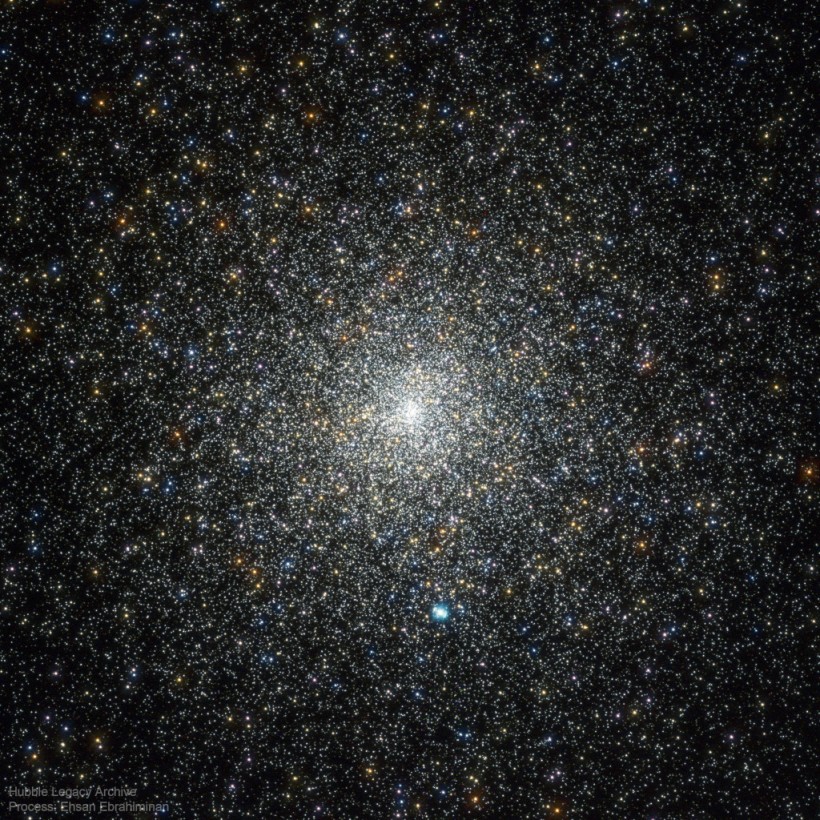In a mesmerizing display of celestial beauty, a stunning photo from NASA's Hubble Space Telescope shows the captivating globular star cluster known as Messier 15 (M15).
This ancient cluster, consisting of over 100,000 stars, offers a glimpse into the early stages of our galaxy's development, dating back an astounding 13 billion years. Situated approximately 35,000 light-years away toward the constellation Pegasus, M15 is among the 170 globular star clusters that grace the Milky Way's halo.

Messier 15, a massive globular star cluster containing over 100,000 stars, is a 13 billion-year-old relic of our galaxy's early years. This Hubble image reveals its dense concentration of stars, with more than half packed into a central region. Measurements suggest the presence of a massive black hole at its core, while a planetary nebula named Pease 1 can be seen as a small blue blob in the image.
Celestial Congregation
The latest image, expertly reprocessed to unveil its splendor, showcases the true majesty of the M15. Spanning a diameter of about 200 light-years, this celestial congregation boasts an extraordinary feature-more than half of its stars are tightly packed within a mere 10 light-years, forming one of the densest known concentrations of stars.
Researchers have made an intriguing discovery within this densely populated core. Using observations from the Hubble Space Telescope, scientists have detected a remarkable phenomenon-M15's central stars exhibit increasing velocities, hinting at the presence of a massive black hole residing at the cluster's heart.
This finding provides valuable insights into the dynamics and structure of globular clusters, shedding light on the intricate interplay between stars and black holes within these dense cosmic communities.
Among the many stellar wonders nestled within M15, there is an additional celestial gem to behold. Known as Pease 1 or PN Ps 1, this planetary nebula appears as a small azure blob just below and to the right of the cluster's center.
The presence of Pease 1 within M15 adds an extra layer of intrigue, contributing to our understanding of the varied celestial phenomena contained within these ancient star clusters.
NASA Hubble Space Telescope Captures the Colors of M15
The Hubble Space Telescope's ability to capture the intricate details and stunning colors of M15 showcases its unrivaled observational prowess.
By peering deep into the heart of this globular star cluster, astronomers gain invaluable insights into the formation and evolution of galaxies throughout the cosmos.
The reprocessed image released by NASA on Thursday is a testament to the awe-inspiring wonders that lie beyond our world, captivating scientists and the public alike.
In related news, Hubble has recently seized captivating proof of an uncommon variety of a black hole, presenting astronomers with fresh perspectives into the enigmatic domain of "intermediate-sized" black holes.
Situated at the core of the nearest globular star cluster and positioned nearly 6,000 light-years distant from our planet, this remarkable revelation contributes to our comprehension of these cosmic puzzles. Learn more about this discovery by clicking here.
Related Article: NASA's Hubble Space Telescope Captures 'Butterfly Nebula' In Stunning Motion | Fun Facts About This Beautiful Space Butterfly









